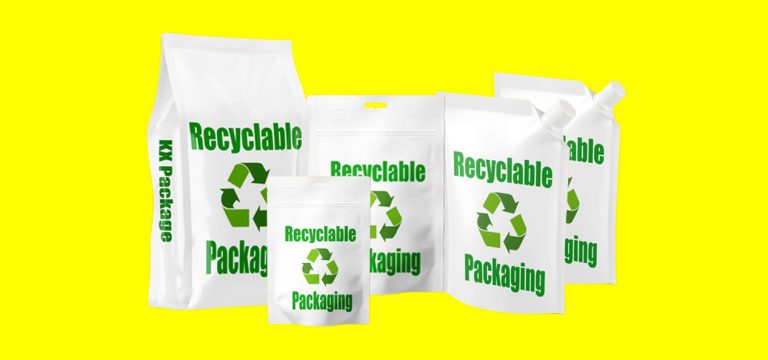Why do we need recyclable packaging?
The world is facing an environmental crisis, and one of the biggest contributors to this crisis is the waste generated by packaging. Packaging waste is a major problem, as it can take hundreds of years to decompose and can cause significant harm to wildlife and their habitats. This is why it is essential that we start using recyclable packaging.

Benefits of recyclable packaging
Recyclable packaging has a lot of benefits, both for the environment and for businesses.
First and foremost, recycling packaging reduces the amount of waste that ends up in landfills.
By using recyclable package, businesses can reduce their environmental impact and help to conserve natural resources. Recyclable package also helps to reduce greenhouse gas emissions, as it requires less energy to produce than non-recyclable packaging.
Another benefit is that it is often more cost-effective than non-recyclable package.
Recyclable materials can be reused multiple times, which means that businesses can save money on packaging costs in the long run. In addition, using recyclable package can help businesses to improve their reputation, as consumers are becoming increasingly concerned about the environment and are more likely to support companies that are committed to sustainability.
Recyclable package also has benefits for consumers.
For one, it can help to reduce the amount of waste that households produce. By using recyclable package consumers can reduce their environmental footprint and contribute to a more sustainable future. Recyclable packaging is also often more convenient for consumers, as it can be easily recycled and disposed of properly.
Challenges to adoption of recyclable package
Despite the benefits of recyclable package, there are still some challenges to its adoption.
One of the biggest challenges is the lack of infrastructure for recycling. In many areas, there are limited recycling facilities, which means that even if consumers and businesses want to use recyclable packaging, there may not be a way to dispose of it properly. This is why it is important for governments to invest in recycling infrastructure and make it easier for consumers and businesses to recycle.
Another challenge to the adoption of recyclable packaging is the perception that it is more expensive than non-recyclable packaging. While it may be true that the upfront costs of recyclable packaging are higher, in the long run it can be more cost-effective, as businesses can save money on packaging costs and improve their reputation with consumers.
In conclusion, the adoption of recyclable package is essential for the environment, for businesses, and for consumers.
By reducing the amount of waste that ends up in landfills, conserving natural resources, and reducing greenhouse gas emissions, recyclable packaging can help to create a more sustainable future. While there are challenges to the adoption of recyclable package, it is important that we continue to work towards a more sustainable future by investing in recycling infrastructure and making it easier for businesses and consumers to use recyclable packaging
What can we do for recyclable packaging?
Recycling is an essential step in reducing the amount of waste we generate and preserving the environment. To make packaging more recyclable, here are some suggestions:
Use recyclable materials: Packaging materials like paper, cardboard, aluminum, and glass are all recyclable. Using these materials instead of non-recyclable plastics can help reduce the amount of waste that ends up in landfills.
Reduce packaging: Reducing the amount of packaging used can help to minimize waste. By eliminating excess packaging, we can save resources, reduce waste and reduce the environmental impact of packaging.
Improve labeling: Clear and accurate labeling of packaging can help consumers understand how to recycle properly. Markings such as “recyclable,” “compostable,” or “biodegradable” can help individuals understand how to properly dispose of the packaging.
Encourage recycling: Educating consumers on the importance of recycling and how to properly recycle packaging can help reduce waste. Retailers can also provide recycling bins in-store to make it easier for customers to recycle packaging.
Collaborate with suppliers: Working with suppliers to source packaging materials that are more easily recycled can also help to reduce waste. Suppliers may also have insights into innovative packaging solutions that are more sustainable.
Government policies: Governments can implement policies that require manufacturers to use recyclable materials for packaging or offer incentives for companies that adopt sustainable packaging practices. This can help drive positive change on a large scale.
By adopting these practices, we can reduce the amount of waste generated by packaging and help to create a more sustainable future.
